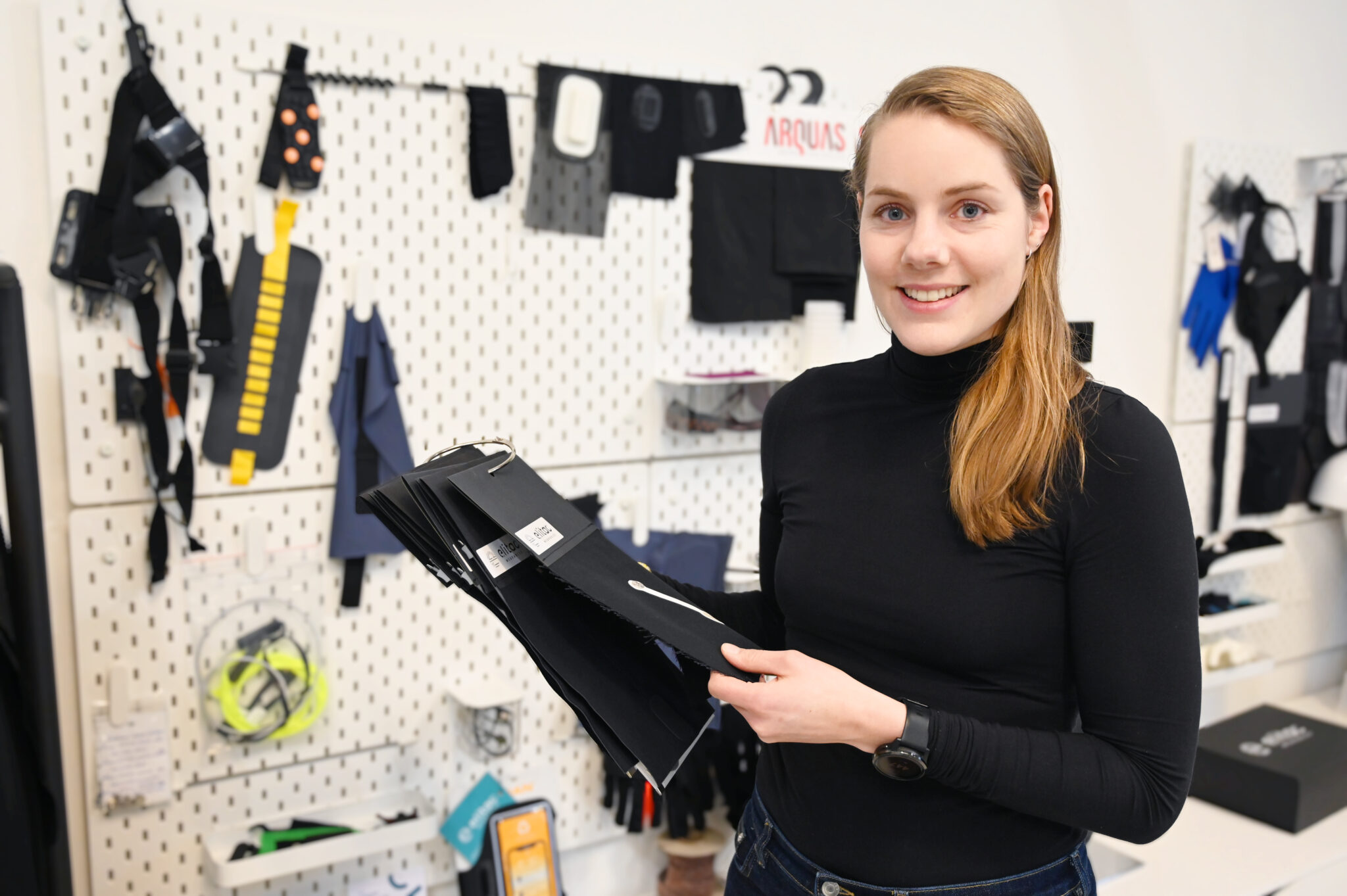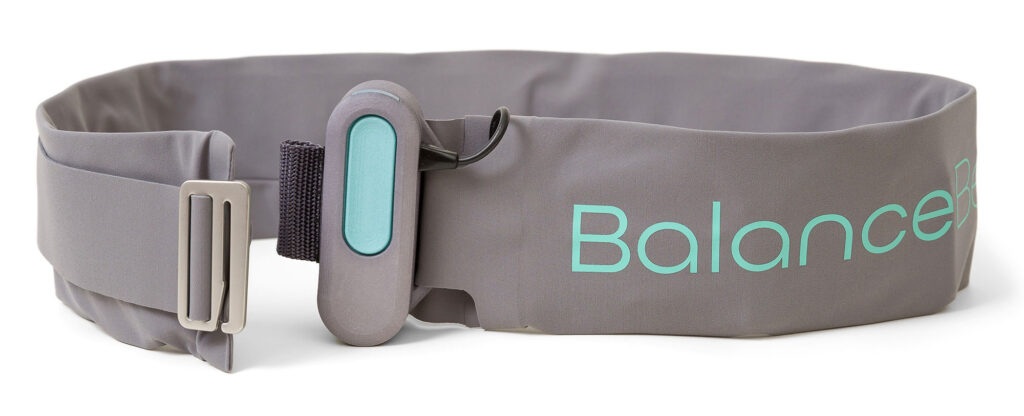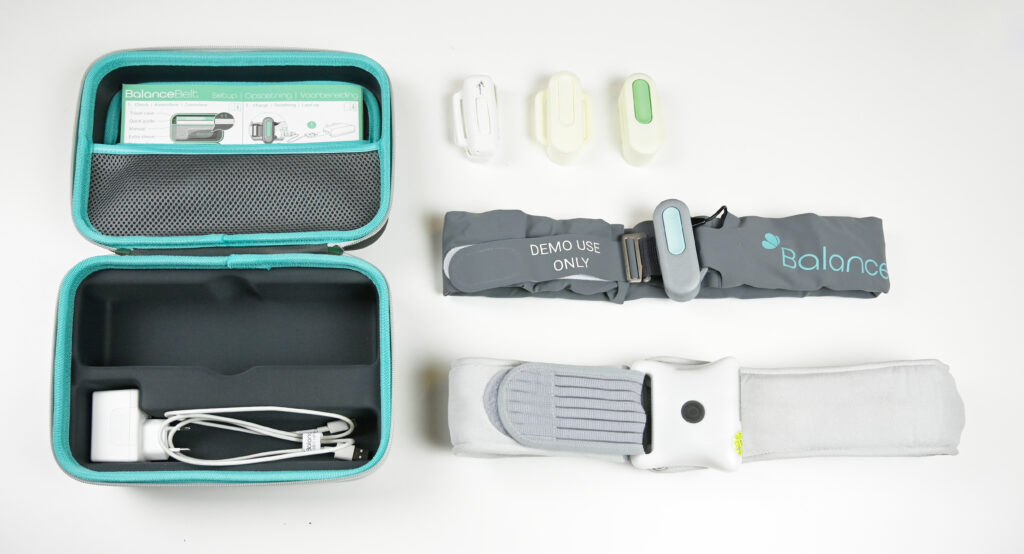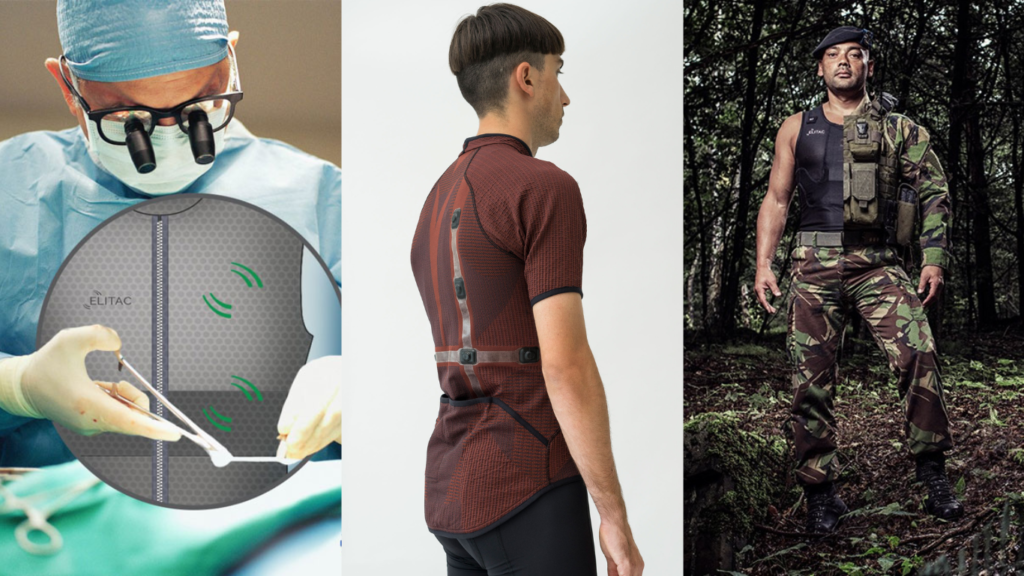Wearable Technology
For a Better Life
Elitac Wearables formulates its mission on its website: We aim to improve 1 million lives by 2035 by integrating electronics and textiles and creating smart wearables.
We are happy to share their story with you.

Inhoudsopgave
Haptic Feedback
Tineke Spikker is the Design Lead and project manager at Elitac Wearables. She tells us how the company was founded after one of the founders, Wouter Vos, conducted research for TNO on haptic feedback – feedback through vibrations, thus on feeling – and how to apply it in practice. The first project started after winning the Defense Innovation Competition. Merijn Klarenbeek, Marc Grootjen, Jasper Dijkman, Wouter Vos, and Prof. Jan van Erp joined forces, and Elitac Wearables was the result.
The first wearables – the original ScienceSuit and Mission Navigation Belt – were strongly focused on haptic technology. That’s why the founders named the company ‘Elitac’, for Elite Tactile Systems. Over the years, expertise expanded from haptic feedback to sensor integrations such as digital compasses, accelerometers, gyroscopic sensors, alongside haptics. The focus now is on integrating this ‘hard’ technology into wearables that are soft, tangible, and comfortable to wear. Hence, the name changed from Elitac to Elitac Wearables.

Wearables are smart and compact electronic devices usually worn on the arm, wrist, or close to the skin, capable of collecting and processing information about the human body, such as temperature and heart rate.
Direction and Balance
Tineke tells us in our conversation about a hip belt with vibrators that has the function of a compass. “These are used, for example, to communicate direction to the wearer in open fields. Using waypoints and haptic feedback, you can, for example, find your direction in a dense forest without having to use your eyes, ears, or hands.” An important medical development of the company is the BalanceBelt. Prof. Dr. Kingma of the Maastricht University Medical Center+ worked on a solution for patients with balance problems. They had done a lot of research and developed a working prototype. It was a very heavy and expensive solution. Merijn Klarenbeek believed he could significantly improve this with Elitac Wearables. The result was the BalanceBelt. It is a belt that patients wear invisibly under their clothing and which allows them to maintain their balance within a few hours of first use. The belt achieves this by precisely measuring body posture and providing feedback through vibrations.

Tineke shows us various products, from the flexibly adjustable ScienceSuit to a development for motion tracking, a smart safety vest for road workers working on control panels, a solution to remotely control a robot by having it communicate with a work jacket with sensors. Other applications include motion analysis for athletes, and what about an ECG measurement for fighter pilots. Projects that seem to have stepped out of futuristic visions, but for which Elitac Wearables has developed concrete solutions. “Life should become a little easier with what we bring,” Tineke proudly states.
From Idea to Product
From idea to product, that’s quite a journey in many of the projects. Elitac Wearables develops its own products but also based on customer demand. “Together with the customer, we sit down to see what is possible based on their idea. We usually do this in a workshop. We spend a day together exploring and testing what it would take to implement the idea. A sensor not only needs to be placed in the right place on the body, but you also need to consider how to keep that sensor there as the body moves. For example, with the Smart-safety-vests, we also have a man-down detection. And for the ECG measurement, we ended up with fabric with patches on it that we managed to create using conductive ink. The housing for the electronics is then attached with snap fasteners. Specifically for that solution, you also have to deal with G-forces and you want to prevent pressure points on the pilot’s body. The development keeps ongoing!”

Theory and Practice
Research is not only conducted in-house but also by TNO, theoretically exploring the possibilities. The practical implementation is done together with Elitac Wearables. We have the conversation in a workshop where a colleague of Tineke is working on assembling a new prototype. With care and precision, a soft and flexible product is being worked on behind a sewing machine. “It’s important that a product is comfortable for the wearer.” In-house at Elitac Wearables, specialists work in disciplines such as software, hardware, textiles, research, and product design. Tineke studied Industrial Design Engineering in Twente, so she is involved in product design.
“We have a number of 3D printers here in-house with which we can make prototypes and single pieces. Once larger quantities are produced, we outsource some specific parts to Parts On Demand. The housings of the BalanceBelt are a good example. “When we made the first samples, we didn’t have printers ourselves, so those were also made by Parts On Demand,” she says. “It’s very easy to switch with them. Of course, because they are located nearby, but especially because of the short lines of communication we have with them. When we met, we were given a tour and could see all the possibilities. We speak the same language, that was clear very quickly.”

Quick & Clear
The partnership with Parts On Demand is clearly visable in everything Tineke tells us.
“That’s a big difference from other parties. Communication is quick and clear, we have a relationship in which we both think about what else we can do for each other. This also means suggesting projects from third parties, back and forth.” With the BalanceBelt, the specific color envisioned for it proved to be a challenge. “Various samples were made until we got the right color. That flexibility and the possibilities for fast iterations are, of course, the strength of 3D printing. But at Parts On Demand, we can directly consult with the man behind the machine. You’re in the factory where it’s made, which is fun.”
Got an Idea Too?
Elitac Wearables offers expertise and development services for companies looking to innovate, improve, or accelerate in the development of wearables for the medical sector, the security sector, sports, and more. The focus lies in the integration of electronics and textiles, with a particular focus on haptic feedback applications and sensor integrations.
The company continuously invests in research to ensure it remains at the forefront of new technological developments. With a multidisciplinary team and 180 m² of R&D facilities, wearables are developed from idea to commercially viable product. Project-based for clients, participating in funded research projects, and investing in various interesting projects.

Are you looking for a reliable partner that can scale with you and your business?
Do not hesitate to contact us:
Phone: (+31) (0) 85 4444 200
Email: info@partsondemand.eu